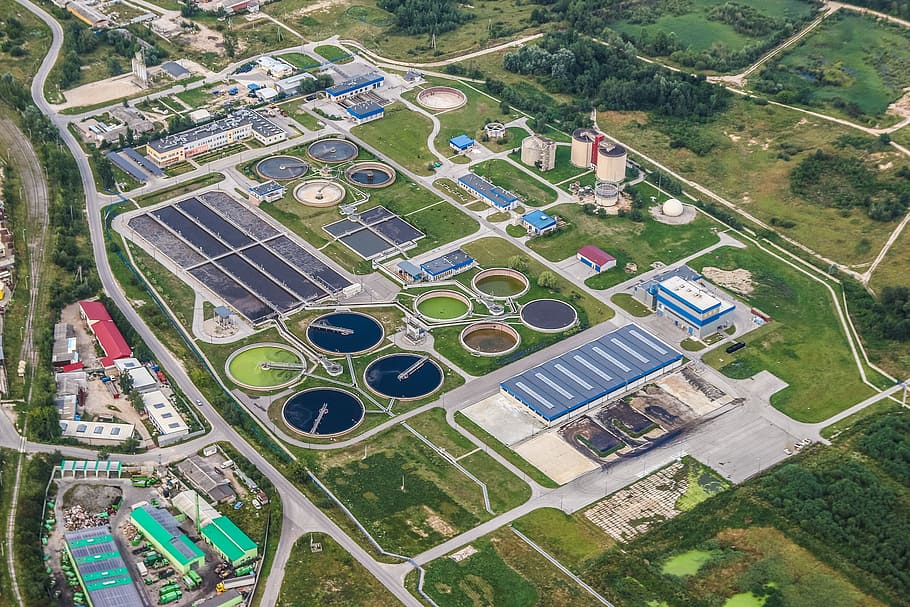Water treatment
Contents |
[edit] Introduction
Water is a chemical compound that is essential for all known forms of life. It is a transparent, tasteless, odourless and almost colourless substance that covers 71% of the Earth’s surface and is the main constituent of rivers, lakes, oceans and so on.
[edit] Treating water
In order to sustain human and other forms of life, safe drinking water is essential, with good sanitation being the single most important determinant of public health.
Sanitation has improved globally in recent decades, but it is estimated that more than 2.5 billion people still do not have access to adequate sanitation and 1 billion do not have access to safe water. Forecasts suggest that by 2025, over half the world’s population will be vulnerable in some way related to water supply or sanitation.
Typically, the first stage of the water supply process is the collection of untreated water (or raw water) from the natural environment in reservoirs, either from rivers or streams or from groundwater.
The collected water is then directed to a treatment facility, where it goes through a series of processes to remove unwanted substances (such as soil, sand, stones and vegetation) and harmful materials (such as chlorine and other contaminants) to produce water that meets specified requirements. The end result should be safe for use - whether for human consumption, washing, recreation, industrial applications, irrigation and so on - and free of undesirable, materials that could damage equipment during - or after - the water treatment process.
[edit] Steps of water treatment
After collection, the stages of water treatment include:
- Screening and straining. This is the basic removal of large elements such as organic and inorganic matter.
- Coagulation and flocculation. During coagulation, certain chemical agents (referred to as coagulants) are added to untreated water to make the particles in the raw water bind together (flocculation). After this process, the larger particles are more easily separated out for removal.
- Sedimentation. Large, insoluble particles created during coagulation and flocculation are permitted to settle to the bottom of large holding facilities where the treated water is kept. Cleaner water then separates out to be collected at the top. This process is sometimes called clarification.
- Filtration.In this stage, the water is distributed over filters to remove the smaller insoluble particles. With rapid gravity filters, water is passed through a tank of coarse sand which traps particles. With slow sand filters, water is slowly filtered through large beds of fine sand.
- Disinfection. The water’s purity is tested several times before a tiny amount (less than one milligram per litre) of chlorine is added to kill any organisms or bacteria which may remain.
- Storage and distribution. Once treatment is complete, the water is stored in covered reservoirs before being pumped out via a distribution network of pipes and pumping stations.
[edit] Water treatment vs water purification
Purification is a type of treatment, but the two terms are not synonymous. Water purification is a specific aspect of water treatment that removes toxic materials (such as contaminants and pathogens) from the water in order to make it fit for consumption. While it is often incorporated into the treatment process, purification is not always required. For instance, purification may not be required for industrial purposes.
Pressurisation of Closed Heating and Cooling Systems (BG82 2022), by Rob Clemson, published by BSRIA in October 2022, defines water treatment as: ‘Any processes that improve the quality of water to make it appropriate for its intended use and reduce the risk of damage to the system. Detail on the topic can be found in BSRIA Guide BG 50.’
[edit] Related articles on Designing Buildings
Featured articles and news
The UK’s largest air pollution campaign.
Future Homes Standard, now includes solar, but what else?
Will the new standard, due to in the Autumn, go far enough in terms of performance ?
BSRIA Briefing: Cleaner Air, Better tomorrow
A look back at issues relating to inside and outside air quality, discussed during the BSRIA briefing in 2023.
Restoring Abbotsford's hothouse
Bringing the writer Walter Scott's garden to life.
Reflections on the spending review with CIAT.
Retired firefighter cycles world to raise Grenfell funds
Leaving on 14 June 2025 Stephen will raise money for youth and schools through the Grenfell Foundation.
Key points for construction at a glance with industry reactions.
Functionality, visibility and sustainability
The simpler approach to specification.
Architects, architecture, buildings, and inspiration in film
The close ties between makers and the movies, with our long list of suggested viewing.
SELECT three-point plan for action issued to MSPs
Call for Scottish regulation, green skills and recognition of electrotechnical industry as part of a manifesto for Scottish Parliamentary elections.
UCEM becomes the University of the Built Environment
Major milestone in its 106-year history, follows recent merger with London School of Architecture (LSE).
Professional practical experience for Architects in training
The long process to transform the nature of education and professional practical experience in the Architecture profession following recent reports.
A people-first approach to retrofit
Moving away from the destructive paradigm of fabric-first.
International Electrician Day, 10 June 2025
Celebrating the role of electrical engineers from André-Marie Amperè, today and for the future.
New guide for clients launched at Houses of Parliament
'There has never been a more important time for clients to step up and ...ask the right questions'
The impact of recycled slate tiles
Innovation across the decades.
EPC changes for existing buildings
Changes and their context as the new RdSAP methodology comes into use from 15 June.
























